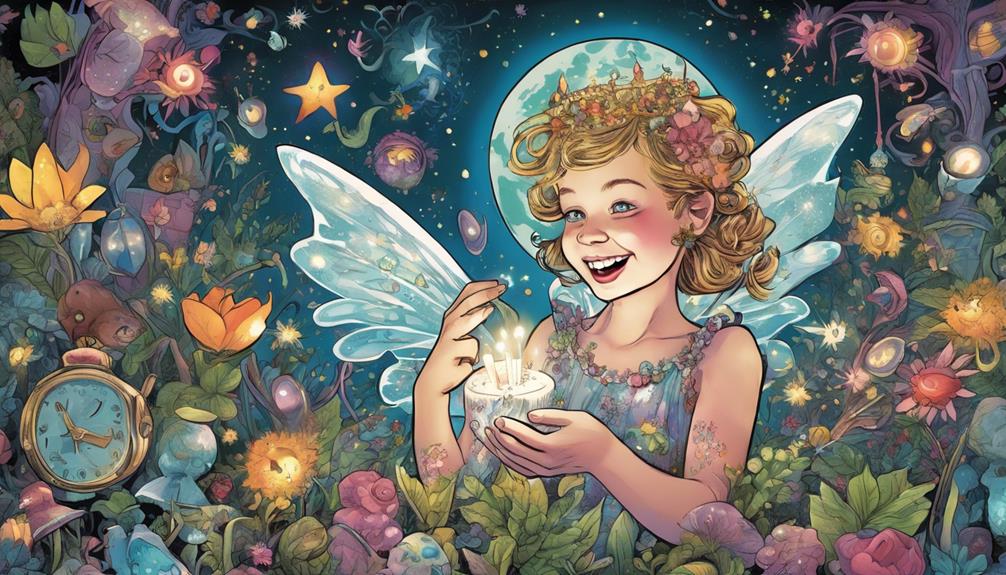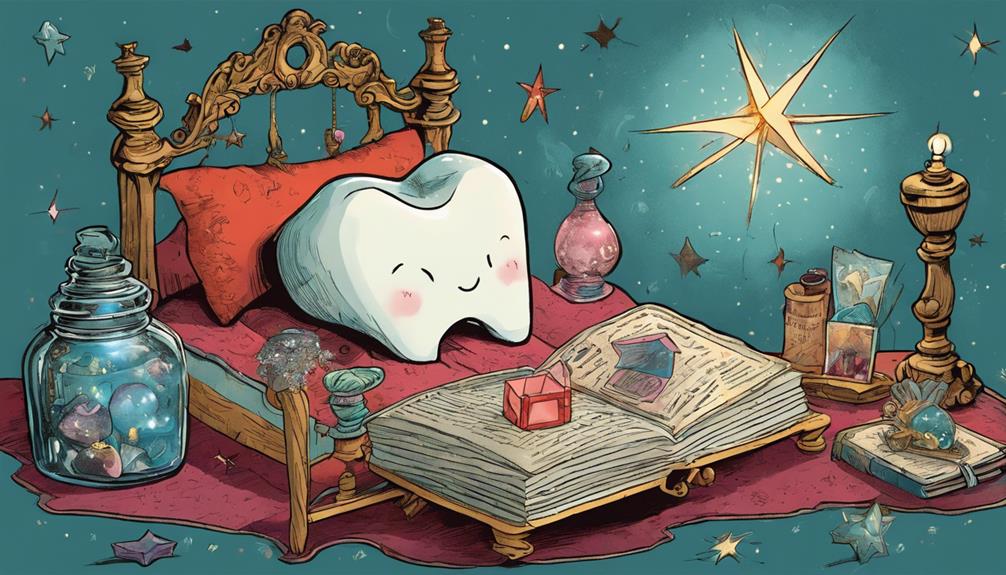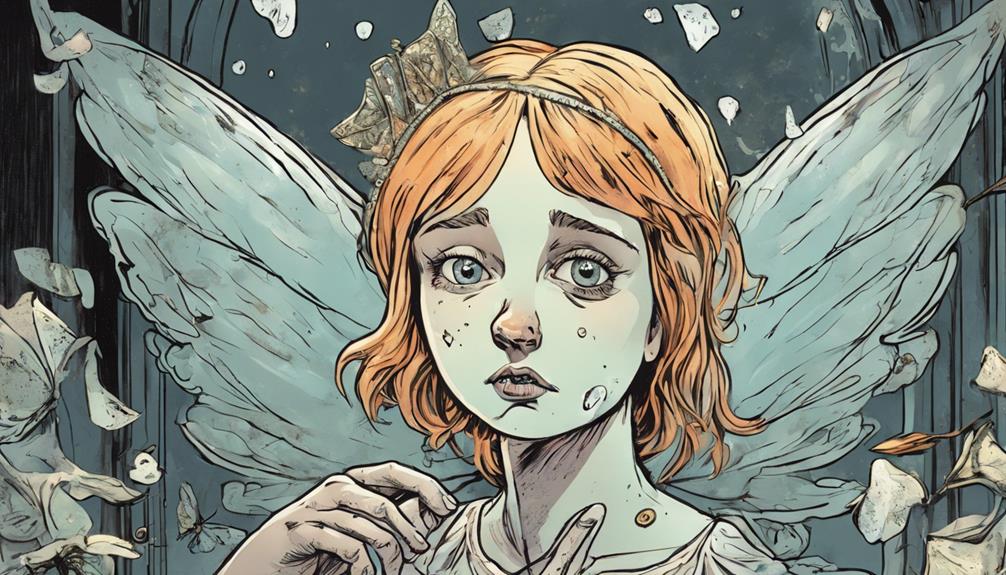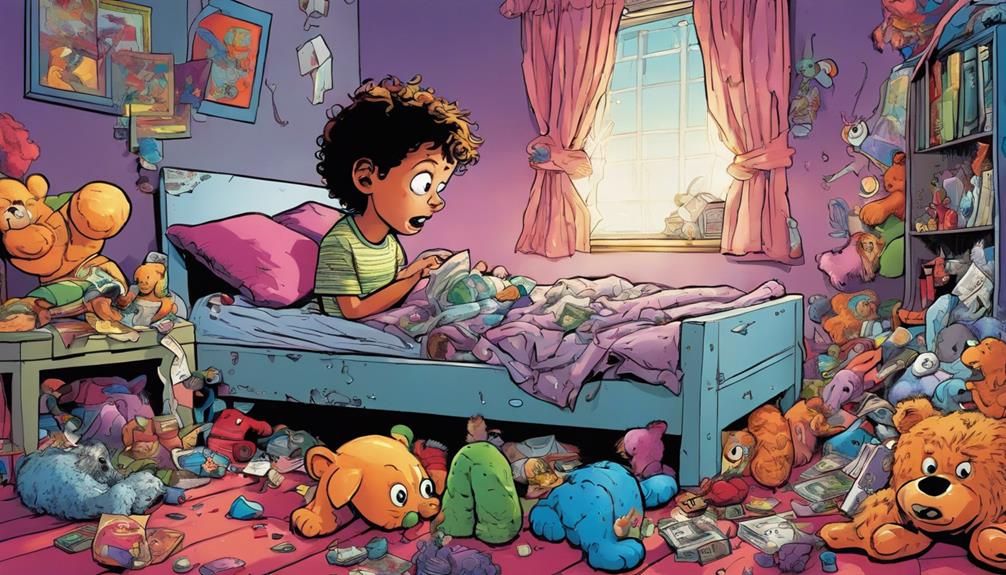The Tooth Fairy's most amazing discoveries show you the magic behind lost baby teeth. She found joy, tradition, and wisdom in every tiny tooth collected. You'd be fascinated to learn how various cultures celebrate this milestone, from the French mouse to the Spanish El Ratoncito Pérez. Each tradition adds excitement and teaches children about growth and oral health. She even inspires creative ways to preserve those teeth as keepsakes or jewelry! Most importantly, the Tooth Fairy helps children embrace this change with fun stories, fostering positive associations with dental care. There's so much more to uncover about her enchanting journey.
Key Takeaways
- The Tooth Fairy discovers unique cultural traditions surrounding tooth loss, highlighting diverse practices from around the world.
- She finds that baby teeth symbolize growth, marking significant milestones in children's lives.
- The fairy uncovers creative ways to preserve baby teeth, transforming them into keepsakes or jewelry.
- She learns that dental health education is enhanced through engaging stories, encouraging children to care for their teeth.
Origins of the Tooth Fairy

The Tooth Fairy's origins blend ancient European customs with American folklore, creating a delightful tradition that captivates children today.
In Europe, parents often followed cultural beliefs that involved burying lost baby teeth to encourage healthy adult teeth growth. This practice laid the groundwork for the Tooth Fairy tradition.
You mightn't know that the first known mention of a tooth-collecting figure in the U.S. appeared in the Chicago Daily Tribune in 1908, signaling the start of a uniquely American myth.
Global Tooth Traditions

Exploring tooth traditions around the world reveals a fascinating array of customs and beliefs that vary widely from the American Tooth Fairy myth.
In France, children enthusiastically await a mouse who collects their lost teeth in exchange for coins, a tradition inspired by a 17th-century fairy tale. Meanwhile, in Spanish-speaking countries, El Ratoncito Pérez comes to life as kids leave their baby teeth under pillows or in water, transforming tooth loss into a magical experience.
In China, the act of losing a tooth becomes a moment for wishes. Children hide their lost teeth, believing they'll receive a second wish if the tooth is found after a year.
In Nigeria, tooth traditions differ by gender; boys toss their teeth into the air using eight stones, while girls use six. This playful ritual highlights unique cultural practices.
Significance of Baby Teeth

Losing baby teeth marks a pivotal moment in childhood, symbolizing growth and the shift to adulthood. This change from deciduous teeth to permanent ones is significant for both you and your child. It's a time filled with excitement and learning, offering several important benefits:
- Emotional Bonding: You can create lasting memories while guiding them through this experience together.
- Dental Health Awareness: Losing teeth encourages discussions about the importance of caring for one's dental health.
As children around the world lose their baby teeth, they also learn responsibility. Each lost tooth can serve as a reminder of how important it is to maintain good oral hygiene.
The ritual surrounding this milestone not only helps alleviate fears but also instills a sense of achievement. You might even notice your child taking greater interest in caring for their teeth, understanding their role in future dental health.
Creative Tooth Preservation Ideas

How can you creatively preserve your child's baby teeth while making lasting memories? One popular method is to use a keepsake box. This allows you to store those precious teeth in a personalized way, creating an heirloom for future generations.
You might also consider transforming baby teeth into unique jewelry, like pendants or charms. This not only commemorates a milestone but also gives a special meaning to a piece of jewelry.
Additionally, baby teeth hold value beyond sentimentality; they contain stem cells that are currently being researched for potential medical advancements. You could even engage your child with science projects that explore tooth decay and the physical properties of teeth, turning their lost teeth into educational tools. This approach can instill an interest in science while reinforcing the importance of oral hygiene.
These creative tooth preservation ideas help you celebrate your child's growth while fostering a deeper understanding of dental health. Embrace these opportunities to make lasting memories and teach valuable lessons with each precious tooth!
Promoting Children's Oral Health

While preserving your child's baby teeth creates cherished memories, promoting their oral health from an early age sets the foundation for a lifetime of healthy smiles.
You can turn the journey of dental care into a fun adventure by incorporating the magical charm of the Tooth Fairy. Here are some key ways to foster healthy habits:
- Make brushing fun: Use stories about the Tooth Fairy to encourage regular brushing and flossing.
- Create positive experiences: Celebrate loose tooth milestones with visits from the Tooth Fairy, reinforcing a positive association with dental health.
Frequently Asked Questions
What Is the Tooth Fairy Known For?
The Tooth Fairy's known for collecting lost baby teeth and leaving money in exchange. This charming tradition helps you cope with losing teeth, making it a magical experience that promotes positive dental habits and childhood innocence.
What Does the Tooth Fairy Collect?
You might think it's just a silly tradition, but the Tooth Fairy collects lost baby teeth, turning them into treasured keepsakes. Each tooth represents a milestone in your childhood, marking your journey of growing up.
Is There Any Evidence of the Tooth Fairy?
There isn't any solid evidence of the Tooth Fairy's existence. Most of what you find is folklore, with children enjoying the myth despite knowing it's fictional. The magic lies in the tradition, not empirical proof.
What Is the Real Story of the Tooth Fairy?
The real story of the Tooth Fairy combines various cultural traditions, evolving from European customs involving mice to a beloved childhood figure in America. It represents childhood milestones and the magic of growing up, despite its fictional roots.
Conclusion
You might think the Tooth Fairy is just a fun story, but her discoveries reveal so much more! From the origins of her legend to unique traditions around the world, she's shown us how special baby teeth truly are. Did you know that the Tooth Fairy’s legend actually dates back to European folklore in the 18th century? It’s fascinating to see how this tradition has evolved and spread to different cultures across the globe. The tooth fairy’s legend has become a cherished part of childhood, teaching children about the value of kindness and generosity.
By celebrating these small milestones, you're not just engaging your child's imagination; you're also promoting good oral health habits.
So, embrace the magic and let the Tooth Fairy inspire both joy and responsibility in your little one's dental journey!









